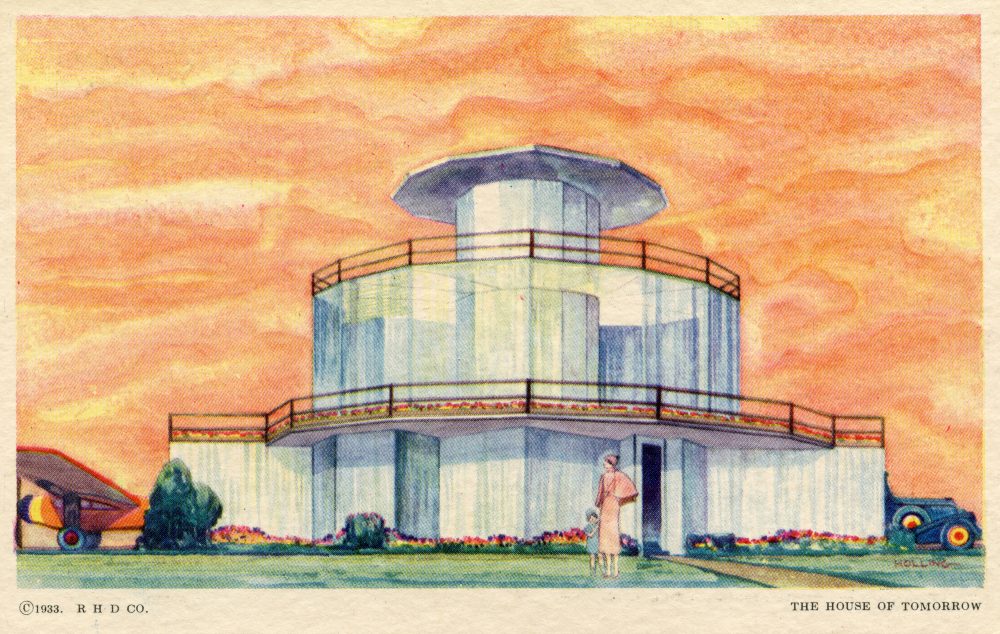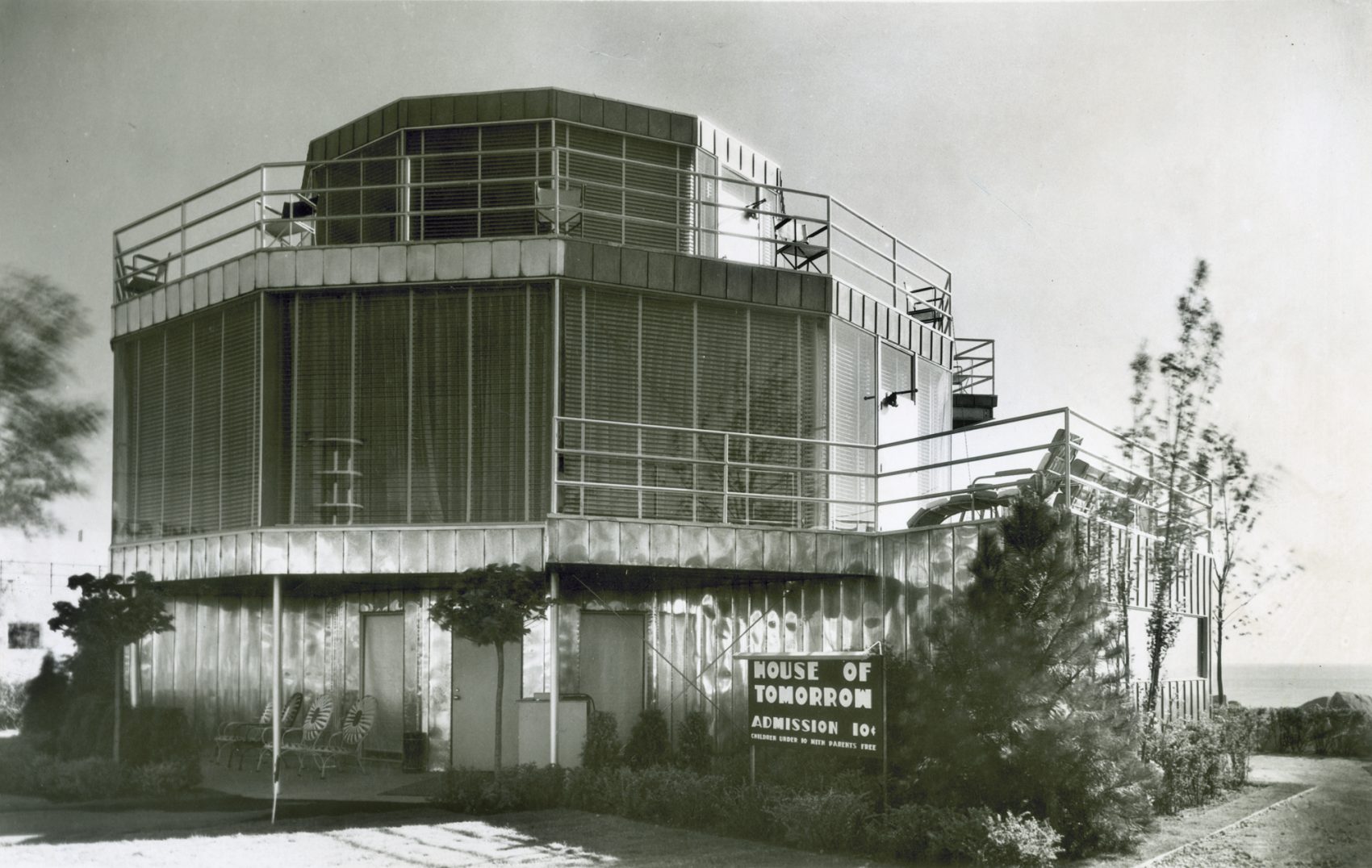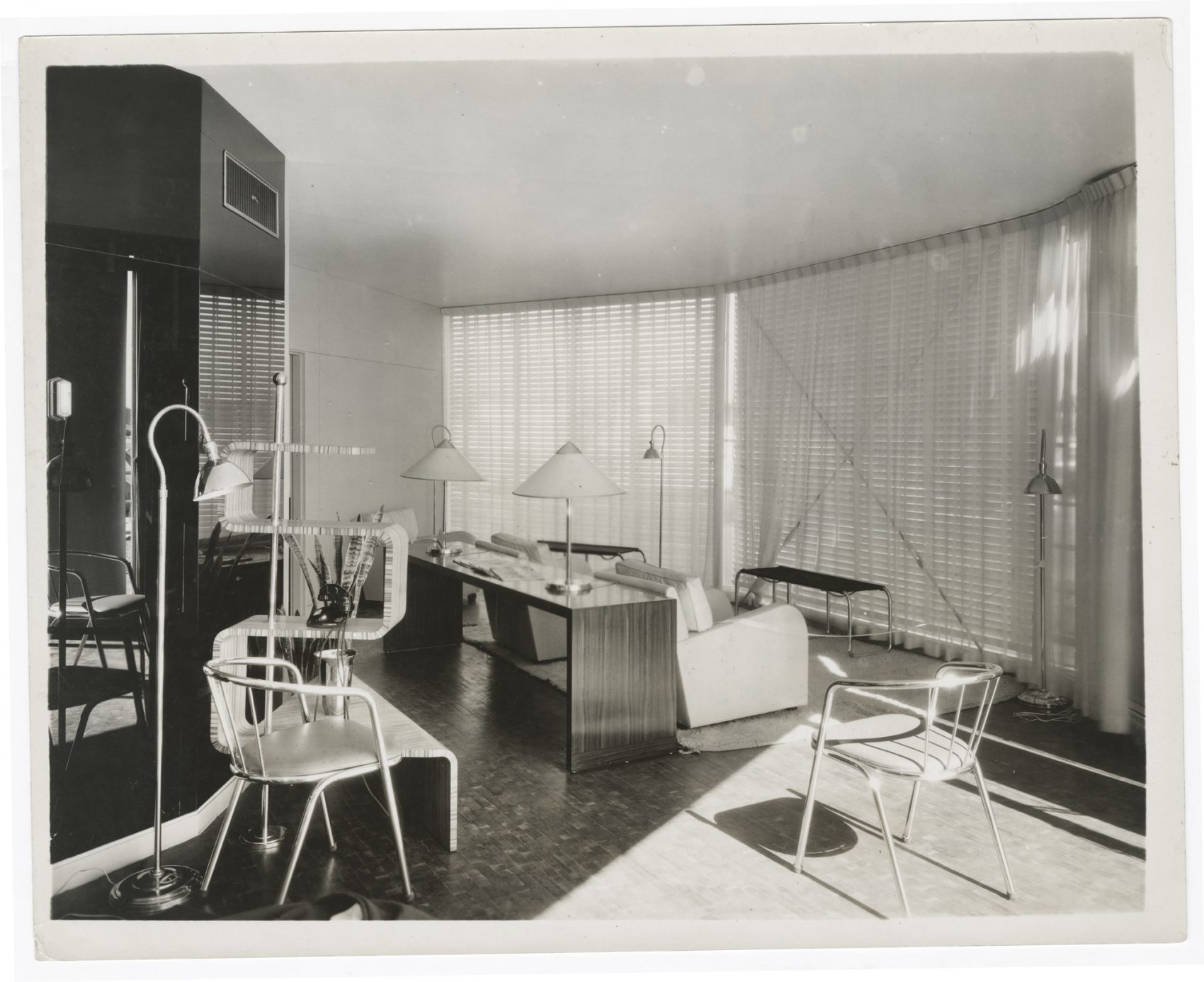Advertisement
Preserving The 'House Of Tomorrow,' A Vision Of The Future From 1933
Resume
The "House of Tomorrow," designed for the 1933 Chicago World's Fair Century of Progress Exhibition, was named a National Treasure this week by the National Trust for Historic Preservation.
When it was built it was one of the most innovative and influential buildings in modern architecture, filled with the latest technology and appliances. But it's fallen into disrepair, and now sits empty. The designation as a National Treasure will help raise money to restore the house.
Here & Now's Lisa Mullins talks with Todd Zeiger, director of Indiana Landmarks' northern regional office, about the plans to preserve the house.
Interview Highlights: Todd Zeiger
On the house's design and layout
"The 'House of Tomorrow,' designed by Chicago architect George Fred Keck, was a very forward-thinking and innovative full-glass house with steel structure, curtain wall, glass walls of the outside. Innovation such as a garage -- you can park your car inside and hit a button and the door would go up... Dishwasher that would wash your dishes for you, and very early in the thinking about solar design."
On why the house was moved from fair
"There was a gentleman by the name of Robert Bartlett. And Bartlett was creating a new development called Beverly Shores, Indiana. And he saw these houses, along with another dozen from the fair, as a way to begin to promote his development. He would bring folks over from the South Shore and tour them through the houses... So he moved them over there from the fair as a way to spark his development, and hope that folks would come by property in Beverly Shores, which he was promoting as the 'Miami Beach of the north.'"

On the kinds of features the house had in 1933
"Everybody loves the airplane hangar. The charge to the designers in the home and industrial arts group of the fair, where this house and the other four nearby at were at, was to design an affordable house that would be thinking about what we would be living at in the future, living in materials, and design appliances, that sort of thing. The 'House of Tomorrow' very much pushed that envelop the farthest and had the most influence — and we'd say the most innovation, and including, that's right, an airplane hangar.
So for some of us, we're still waiting for that innovation to come but it had an airplane hangar. You back your airplane into its own little garage and park it next to your car — had all the things like a machine shop, because if you have an airplane and a car, you need to be able to make some parts and fix it. And then the living space was actually on the upper floor, what you might the second floor, which is another innovation of this home. Most people didn't live only on the second floor in their homes. This one alleviated that up one story."

On the goal of the restoration
"...Actually our vision for this is to make this the best of Keck's design, those influential pieces that we talked about — the glass structure — but also make this a new house for tomorrow, so we can include things around sustainability, and the modern technologies that can be put in as part of our rehabilitation. Once the restoration is completed, Indiana Landmarks — who's doing the project — will lease this house completed. So you would be able to live in the 'House of Tomorrow' for, we're thinking three year periods, and then to be able to enjoy that."
Guest
Todd Zeiger, director of Indiana Landmarks' northern regional office. The organization tweets @IndianaLandmark.
This article was originally published on October 21, 2016.
This segment aired on October 21, 2016.